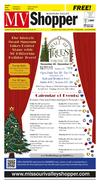012820_YKMV_A3.pdf




shop online at www.missourivalleyshopper.com
January 28, 2020 • Page 3
Frostbite: Serious Coldweather Risk
When temperatures
drop below 30 degrees
(Fahrenheit), farmers,
ranchers and anyone
working outside are at risk
to incur frostbite, trench
foot and/or chilblains. This
is especially true when
cold is combined with
wind.
Cold weather
conditions are the
most common cause of
frostbite, although direct
contact with ice, frozen
metal or very cold liquids
can also lead to frostbite.
Trench foot is a type of
tissue damage brought on
by prolonged exposure to
cold and wet conditions. It
leads to swelling, pain and
sensory disturbances in
the feet.
Chilblains are the
painful inflammation of
small blood vessels in
the skin that occur in
response to repeated
exposure to cold but not
freezing air. Also referred
to as pernio, chilblains can
cause itching, red patches,
swelling and blistering on
hands and feet.
Aaron Yoder,
environmental, associate
professor for agricultural
and occupational
health at the University
of Nebraska Medical
Center, says farmers and
ranchers can avoid these
serious cold weather
illnesses by recognizing
their symptoms and
understanding how to
respond if either frostbite,
trench foot or chilblains
occur.
“Fingers, toes, cheeks,
nose and ears are the
areas where frostbite
typically occurs,” Yoder
says. “Once skin has been
frostbitten, it may look
white or grayish yellow. It
may feel cold, hard, and
maybe waxy to the touch.”
Persons with frostbitten
skin will experience
numbness of the area,
aching, tingling and
stinging. Appropriate first
aid response includes
finding a warm room or
shelter (i.e. a vehicle) as
soon as possible. If your
feet or toes are frostbitten,
avoid walking, which can
lead to further tissue
damage.
“Soak the affected
area(s) in warm but
not hot water,” Yoder
says. “Avoid rubbing the
affected area because
that could cause tissue
damage. Use a soft cloth
the wrap the affected area,
but don’t use a heating
pad, fireplace or radiator
for warming the frostbitten
area. If there’s a chance
the area could be refrozen,
don’t warm it.”
Minor frostbite can be
treated at home. Serious
frostbite may involve
rewarming, medications,
wound care, surgery and
other various therapies.
If frostbite is severe
enough to warrant a
physician’s care, provide
the doctor with the
following information to
assist in developing a
treatment plan:
1. List all signs
and symptoms you’re
experiencing.
2. Document the
length of time you
have experienced the
symptoms.
3. List key medical
information, including all
other medical conditions,
prescribed medications,
OTC medications and
supplements.
4. Document the date
of your last tetanus shot.
Frostbite increases the
risk of tetanus. If it’s
been more than 10 years
since your last tetanus
vaccination, your doctor
may recommend a tetanus
vaccination.
5. List all the questions
you have for your doctor
about what to expect,
such as:
a. Are tests need to
confirm a diagnosis of
frostbite?
b. What are my
treatment options; what
are the pros and cons of
each option?
c. What results can I
expect?
d. What skin care
routines do you
recommend during my
healing process?
e. What kind of followup should I expect?
f. What changes should
I look for in my skin?
In addition to
rewarming, a physician
may use oral pain
medicine to ease the pain
of rewarming a frostbitten
and gangrene.
inside comfortable,
“Anytime you
area. Once the skin thaws,
To treat trench foot,
insulated footwear.
experience heavy
the doctor may loosely
remove shoes or boots
Insulated gloves protect
shivering, severe fatigue,
wrap the area with sterile
and wet socks. Dry the
hands and dexterity,
drowsiness, or signs of
sheets, towels or dressings feet. Avoid walking to
which is affected by
cold-induced illness,
to protect the skin while
reduce the risk of damage
temperatures below 59
seek warm shelter
it heals. The affected area
to foot tissue.
degrees (Fahrenheit).
immediately,” Yoder says.
may need to be elevated to
Areas most susceptible
On-site sources of
“Avoid tasks that cause
reduce swelling.
to chilblains are the
heat, such as radiant
you to sweat, as that will
To properly heal, a
toes, fingers, ears, and
heaters and air jets, can
quickly rob your body of
frostbitten are must be
nose. When chilblains
help provide protective
heat.”
free of damaged, dead
occur, symptoms include
warmth. Anyone
Warm, caffeine and
or infected tissue. It’s
redness, blistering, itching, experiencing prolonged
alcohol-free beverages can
possible that damaged
inflammation and (in
exposure to wind chill
be used to help maintain
tissue cannot be removed
severe cases) ulceration.
temperatures below 20
energy and body heat.
for one to three months.
To treat chilblains,
degrees (Fahrenheit)
Staying in good physical
Whirlpool
avoid scratching the
should have access to a
condition also helps
(hydrotherapy) or
affected area. Slowly
heater shelter or vehicle.
prevent cold-related
physical therapy may
warm the skin and use
Reducing drafty or
illness.
be included in frostbite
corticosteroid creams
windy areas within
“Farm and ranch
treatment. Hydrotherapy
to relieve itching and
buildings will help
managers need to take
aids healing by keeping
swelling. If blisters and
shield work areas. When
precautions to keep
skin clean and by naturally ulcers are present, they
temperatures drop below
workers safe during cold
removing dead tissue. If
should be kept clean and
30 degrees (Fahrenheit),
and/or wet weather, too,”
the skin or blisters appear covered.
thermal insulating material Yoder says. “Allow them
infected, infection fighting
The most effective
on equipment handles will to complete their work at
drugs may be prescribed.
treatment for these
help protect your hands
a comfortable pace, taking
In the most serious
cold-related illnesses is
from excessive cold. Avoid extra breaks if necessary.
frostbite cases, within the
prevention, beginning with sitting or kneeling on cold, Always have workers
first 24 hours, clot-busting appropriate dress.
unprotected surfaces.
doing jobs in teams during
drugs may be used to
“When you’re working
“Anyone suffering
cold weather to help keep
help restore blood flow to
outdoors, wear a
with ongoing medical
an eye on one another.”
the area. Severe frostbite
minimum of three layers
conditions may need to
When possible, farm
treatment may also require of clothing,” Yoder says.
take special precautions
managers should schedule
surgery or amputation to
“An outer layer to break
when working in the
outdoor work during the
remove dead or decaying
the wind, a middle layer
cold,” Yoder says. “Check
warmest part of the day, or
tissue. Hyperbaric oxygen
to retain insulation and an with your physician to
move a job to an enclose
therapy may also be used, inner layer that allows for
determine if any of your
area. Workers should be
although the value of this
ventilation. Have a change prescription medications
discouraged from sitting
treatment for frostbite is
of clothes available in case might affect you when you or standing in prolonged
still be studied.
your garments become
work in cold conditions.”
periods during cold
Following frostbite,
wet.”
Since alcohol and drugs weather.
both prescribed and
Since 40 percent
can increase heat loss and
“If your employees
over-the-counter (OTC)
of body heat can be
impair judgment, never
aren’t accustomed to
drugs should be used to
lost through the head,
use these substances
cold weather conditions,
help combat pain. Some
protecting the head and
when working in a cold
allow them to acclimate
people may find it helpful
facend cold weather th th environment. Know the
in rd th
themselves to it before
th
to apply aloe vera gelDecember 2 & 3 is9critical. Feet & 17 • and symptoms of
or
conditions , & 10 , 16
signs 1-3:00PM
they begin a task,” Yoder
Bring should be protected from
lotion several times per Your Cameras!
cold-induced conditions
adds.
day to the affected area.
cold and dampness by
and know the appropriate
All exposure to cold and
wearing layered socks
first-aid response to them.
wind should be avoided.
No rings should be worn
on frostbitten fingers and
no other kinds of tight
•Busch & Busch Light 30 pks ........... $15.79
items should be worn.
•Old Milwaukee & Light 30 pks ........$14.99
In the case of frostbitten
feet, don’t walk on them,
•Miller High Life & Light 30 pks ........$14.99
don’t apply direct heat
•Bud & Bud Light 24 pks ........................$17.99
or rub the area. If blisters
109 W. 3rd St. • 605-665-7865 * Yankton Meridian District * www.yanktonrexall.com
develop, don’t break them
as they act as a bandage.
They will break on their
own.
In trench foot, which is
typically less severe than
frostbite, victims may
experience reddening of
the skin, numbness, leg
cramps and swelling. They
may also have tingling
pain, blisters or ulcers,
bleeding under the skin
Always LOW Liquor Prices!
art t he
St
ar wit h a
New Ye
New Roof!
When it’s time to deliver...
The Classifieds
Rock!
Shopper
MV
MV Shopper
M I S S O U R I VA L L E Y
In Print & Online! • 665-5884
M I S S O U R I VA L L E Y
AVERA
WELCOMES
Brian Brandt, APRN,
PMHNP-BC
BEHAVIORAL HEALTH
If you had hail in your area in the last year
or two, or your roof is weathered
YOU NEED to have it inspected.
“No matter what you’re going through, you
don’t have to go through it alone.”
Brian Brandt, APRN, PMHNP-BC, joins
Avera Medical Group Behavioral Health
Yankton to serve the community with
compassionate care. He sees adult patients
facing mental health conditions, such as anxiety,
depression, OCD, bipolar disorder, developmental
disabilities and suicidal tendencies.
“We’ve Got You Covered”
Avera Medical Group Behavioral Health Yankton
409 Summit St., Suite 3200 | Yankton, SD 57078
605-655-1220 | Avera.org/doctors
(605)857-1472
19-PHYS-20381
18-PHYS-15117
1600 Whiting Dr., Yankton, SD
• Insurance Preferred Contractor
• Family Owned – Locally Operated • Licensed / Bonded / Insured


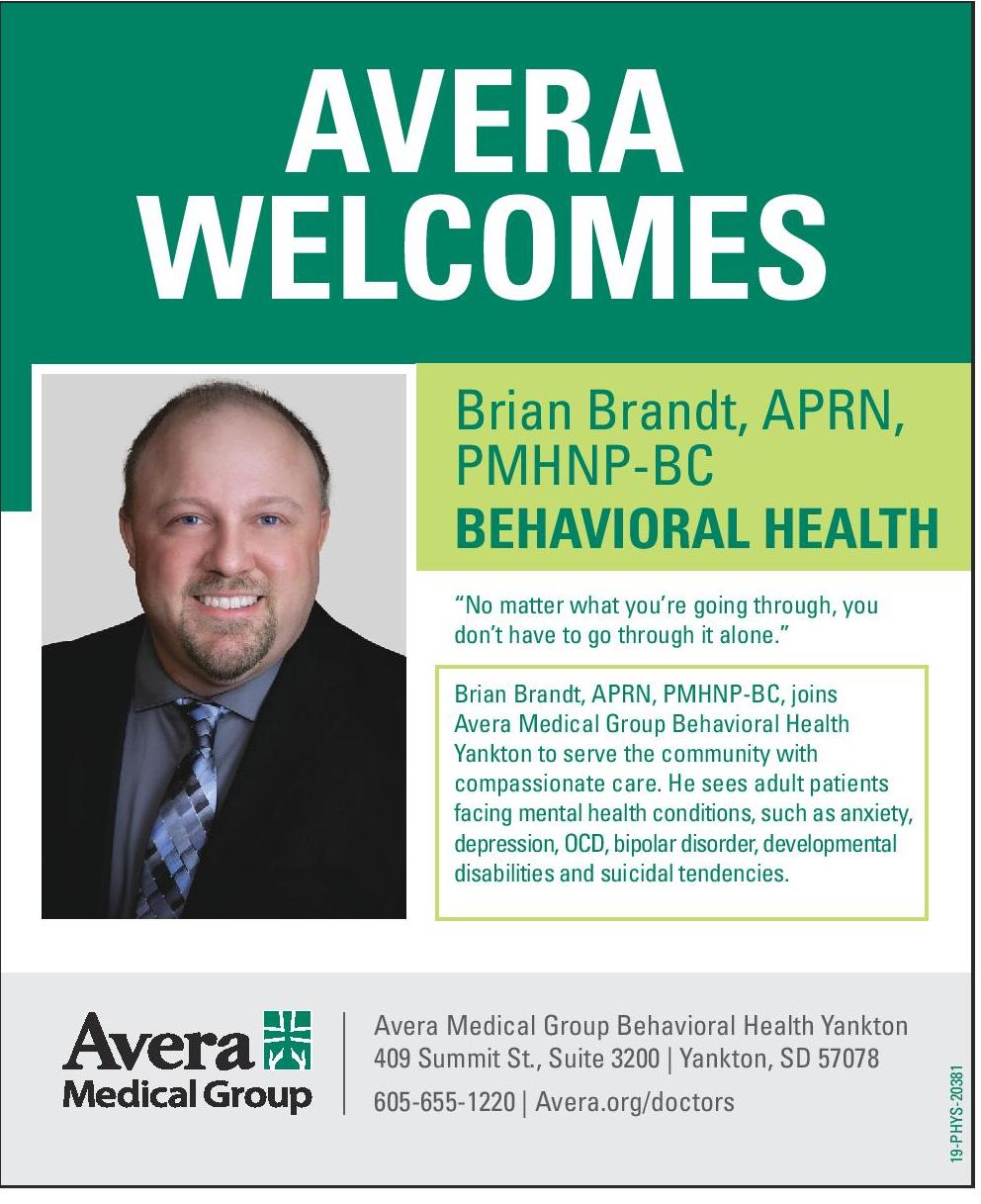




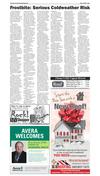
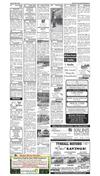
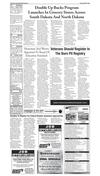
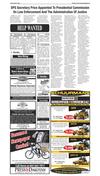

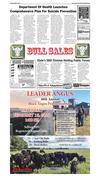
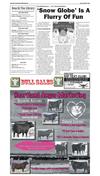
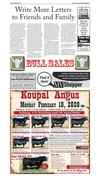
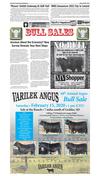
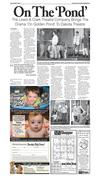
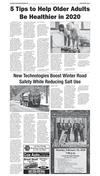

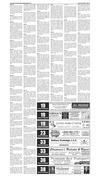
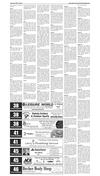
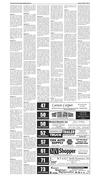
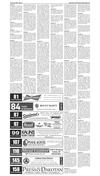
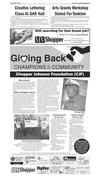

 Previous Page
Previous Page





